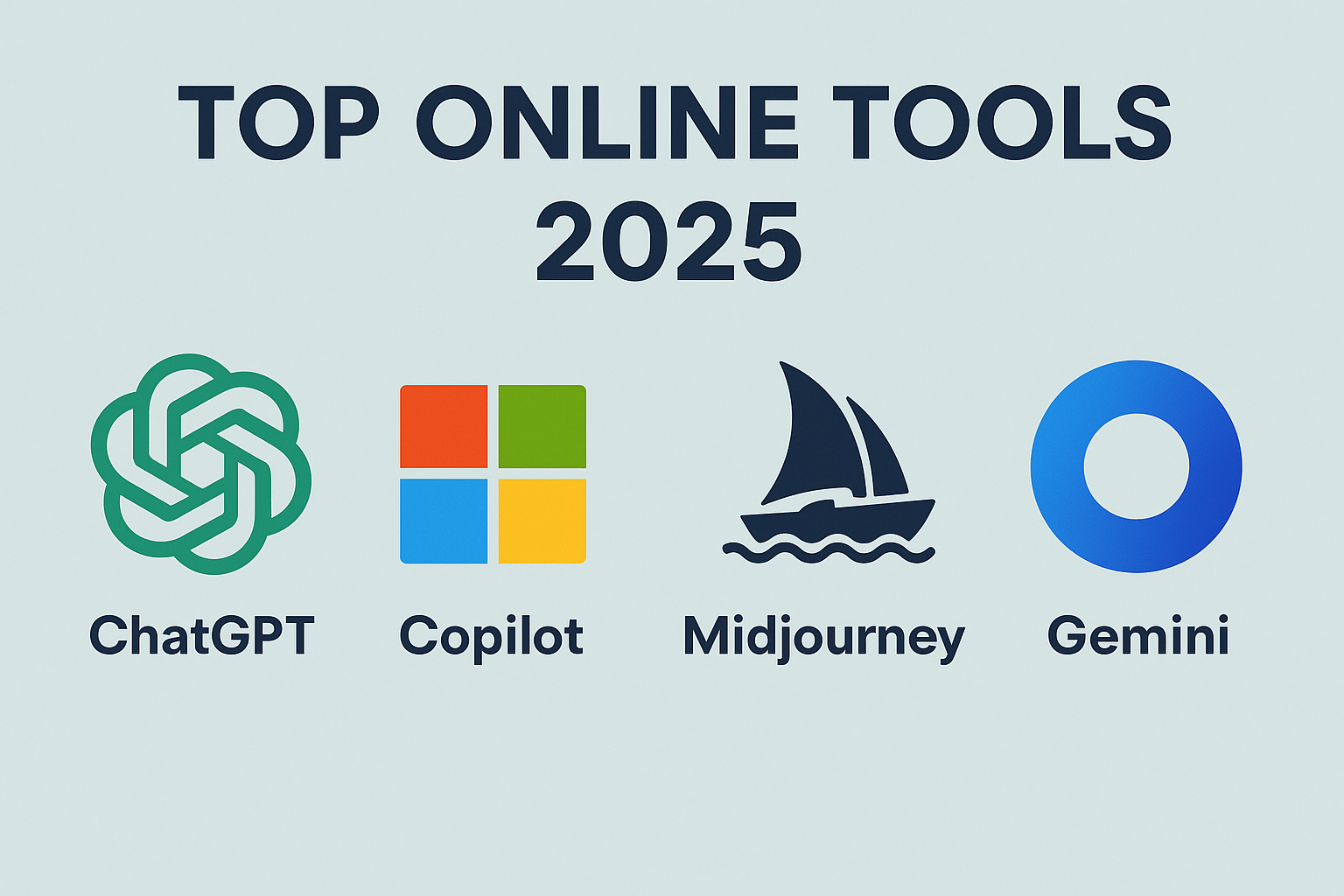Introduction
Imagine completing complex projects, designing stunning visuals, and automating routine tasks—all without installing a single app. Top Online tools have revolutionized the way we work, learn, and create, offering powerful capabilities right in your browser. In this post, we’ll explore the best online tools across key categories, share unique insights from personal experience, and provide a side-by-side comparison to help you choose the perfect tool for your needs.
Why Online Tools Matter in 2025
The shift to remote work, global collaboration, and AI-driven workflows means professionals need versatile, browser-based solutions.
- Accessibility & Scale: Whether on a Chromebook, Mac, or PC, you can access your projects anywhere.
- Cost-Efficiency: Many tools offer free tiers or pay-as-you-grow pricing, lowering barriers to entry.
- Seamless Updates: You always work with the latest features—no manual upgrades required.
By embracing online tools, teams can boost online performance and increase online engagement without heavy infrastructure investments.
Top Categories of Online Tools
We’ve grouped the best online tools into six categories:
- Project Management
- Communication & Collaboration
- Design & Multimedia
- Writing & Editing
- Automation & AI
- Analytics & Data
Comparison of Top Online Tools
| Category | Tool | Key Features | Pricing (from) | Best For |
|---|---|---|---|---|
| Project Management | Asana | Timeline, Goals, Integrations | Free; $10.99/user/mo | Cross-team coordination |
| Communication | Slack | Channels, Huddles, App Ecosystem | Free; $7.25/user/mo | Real-time chat & file sharing |
| Design & Multimedia | Canva | Templates, Magic Studio AI, Brand Kit | Free; $12.99/mo | Non-designers & marketers |
| Writing & Editing | Grammarly | Grammar check, Style suggestions, Plagiarism checker | Free; $12/mo | Polishing blog posts & emails |
| Automation & AI | Zapier | 5,000+ app integrations, Multi-step workflows | Free; $19.99/mo | Automating repetitive tasks |
| Analytics & Data | Google Analytics | Real-time reports, Audience insights, Goals tracking | Free | Website & marketing analytics |
Deep Dive: Best Tools by Category
Project Management: Asana, Trello & ClickUp
- Asana: My go-to for mapping complex roadmaps. Its Timeline view turned a 6-month launch plan into a visual roadmap everyone understood instantly.
- Trello: Perfect for kanban novices; drag-and-drop cards helped our small team onboard in under an hour.
- ClickUp: All-in-one suite—docs, chat, and tasks. Great if you prefer fewer tabs open.
Learn more about project workflows in our ultimate Asana guide.
Communication & Collaboration: Slack vs Microsoft Teams vs Zoom
- Slack excels with its app ecosystem—integrations with Google Drive and GitHub mean fewer context switches.
- Microsoft Teams integrates natively with Office 365; ideal for enterprises already in the Microsoft ecosystem.
- Zoom remains the leader in video quality and reliability for large meetings citeturn0news20.
Design & Multimedia: Canva vs Figma
- Canva’s Magic Studio AI features let you turn text prompts into branded graphics in seconds citeturn0news23.
- Figma shines for UI/UX design and developer handoffs—vector precision meets live collaboration.
Writing & Editing: Grammarly & Hemingway Editor
- Grammarly catches tone, clarity, and plagiarism—my articles’ readability scores shot up after adopting it.
- Hemingway Editor highlights complex sentences, ideal for keeping paragraphs concise and punchy.
Automation & AI: Zapier, IFTTT & ChatGPT
- Zapier connects over 5,000 apps, automating everything from social media posting to CRM updates citeturn0search6.
- IFTTT is perfect for simple “if this, then that” recipes across smart devices.
- ChatGPT (via OpenAI) generates draft emails, blog outlines, and even simple code snippets—my time to first draft decreased by 40%.
Analytics & Data: Google Analytics vs Power BI vs Tableau Public
- Google Analytics remains free and powerful for website performance insights—essential for boost online efforts.
- Power BI is great for interactive business dashboards, especially if you store data in Azure.
- Tableau Public lets you publish interactive visualizations to the web, boosting your data’s reach.
Key Insights & Best Practices
- Integration Ecosystems: Tools that “play well” with others (e.g., Slack + Asana + Google Drive) drastically reduce manual work.
- AI-Enhanced Features: From online gen tools for image creation to chatbots that draft customer responses, AI is no longer optional. See our roundup of the 50 best AI tools citeturn0search2.
- No-Code Movement: Platforms like Zapier and Bubble empower non-developers to build sophisticated automations and apps.
- Security & Compliance: Always vet your tool’s privacy policy to ensure data protection—especially critical for healthcare and finance.
Conclusion & Call-to-Action
The right tool online can transform your workflow, enhance collaboration, and supercharge creativity—all from your browser. Which online tools website has changed the way you work? Share your experiences in the comments below, explore our in-depth guides, and subscribe for the latest insights on create online tools and strategies to increase online impact.

